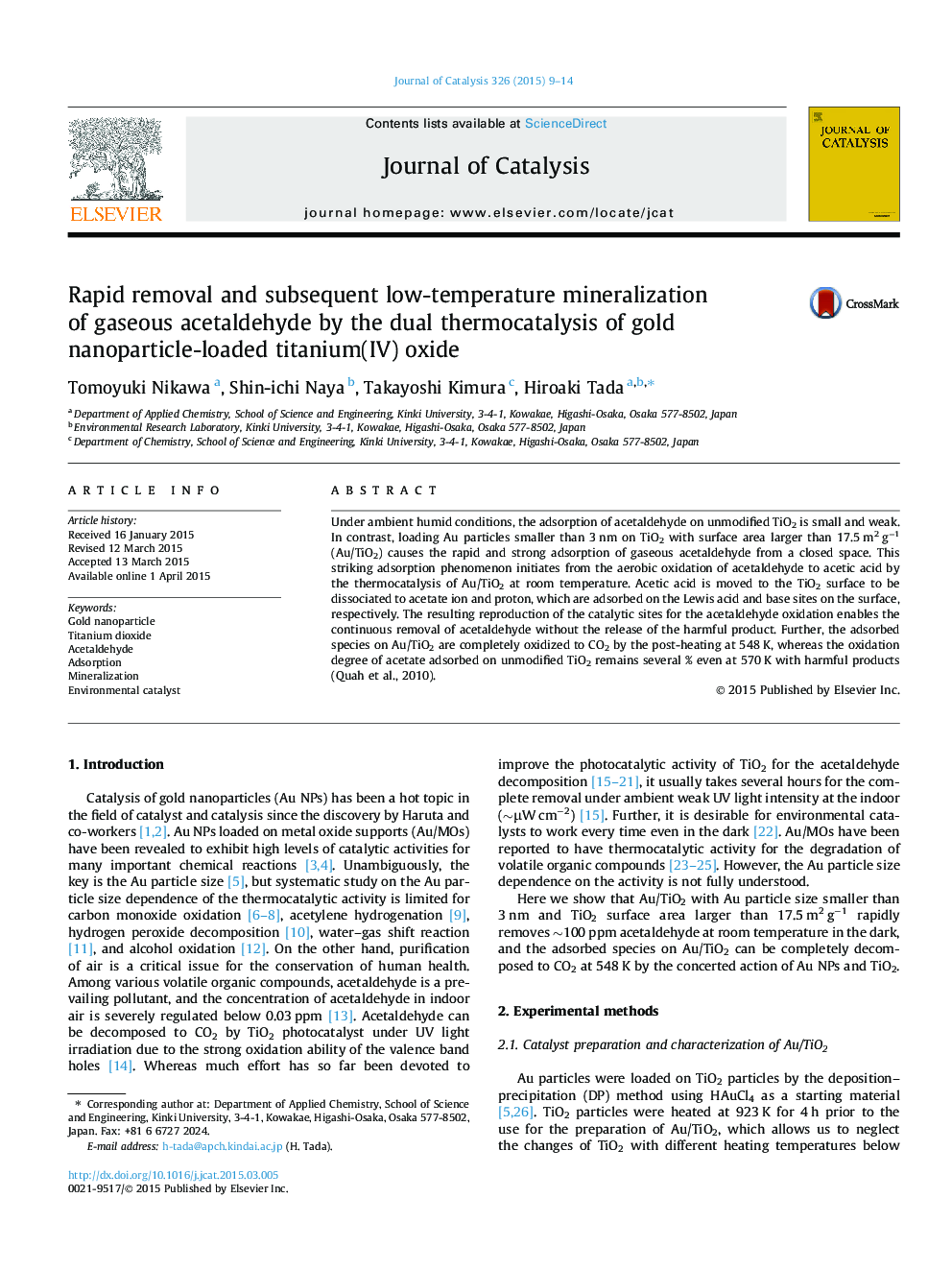| کد مقاله | کد نشریه | سال انتشار | مقاله انگلیسی | نسخه تمام متن |
|---|---|---|---|---|
| 60847 | 47549 | 2015 | 6 صفحه PDF | دانلود رایگان |

• Loading Au nanoparticles on TiO2 (Au/TiO2) drastically enhances the adsorption of acetaldehyde.
• This adsorption results from the oxidation of acetaldehyde to acetic acid by the catalysis of Au/TiO2.
• Acetic acid moves to the TiO2 surface to be dissociated to acetate ion and proton.
• Au/TiO2 also catalyzes the complete oxidation of the adsorbed species to CO2 by the post-heating.
• Reproduction of the catalytic sites enables the continuous removal of acetaldehyde without release of harmful products.
Under ambient humid conditions, the adsorption of acetaldehyde on unmodified TiO2 is small and weak. In contrast, loading Au particles smaller than 3 nm on TiO2 with surface area larger than 17.5 m2 g−1 (Au/TiO2) causes the rapid and strong adsorption of gaseous acetaldehyde from a closed space. This striking adsorption phenomenon initiates from the aerobic oxidation of acetaldehyde to acetic acid by the thermocatalysis of Au/TiO2 at room temperature. Acetic acid is moved to the TiO2 surface to be dissociated to acetate ion and proton, which are adsorbed on the Lewis acid and base sites on the surface, respectively. The resulting reproduction of the catalytic sites for the acetaldehyde oxidation enables the continuous removal of acetaldehyde without the release of the harmful product. Further, the adsorbed species on Au/TiO2 are completely oxidized to CO2 by the post-heating at 548 K, whereas the oxidation degree of acetate adsorbed on unmodified TiO2 remains several % even at 570 K with harmful products (Quah et al., 2010).
Figure optionsDownload high-quality image (93 K)Download as PowerPoint slide
Journal: Journal of Catalysis - Volume 326, June 2015, Pages 9–14